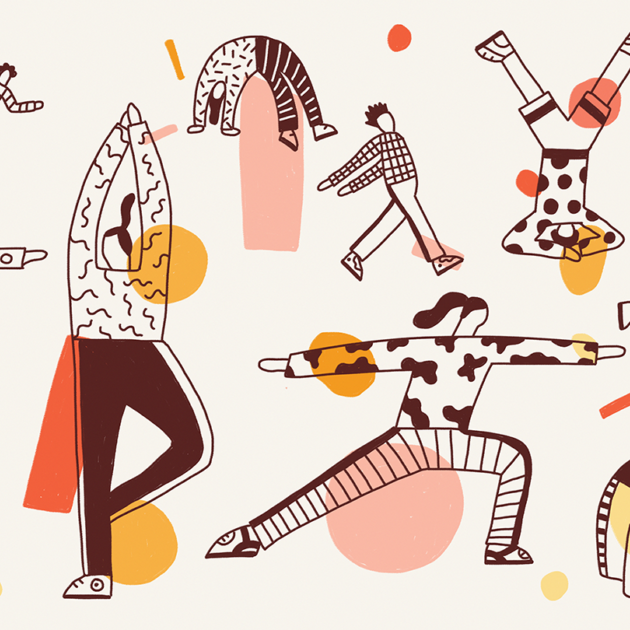We all need inspiration at work. Creative employees can help grow your business by coming up with innovative solutions to problems, expanding sales opportunities, and distinguishing your products, services and brand from competitors.
In order to nurture a creative work culture, you have to help ignite creative thinking in your staff. Many people have forgotten how to let their minds run free to generate innovative ideas. Give your staff some help by encouraging the right mindset. Boosting creative thinking is key to business model innovation. Try these simple techniques to encourage creativity at work.
Three easy creative thinking exercises
You don’t need to be a “creative”- that is someone working in the creative industries, to be “creative”. Being creative is essential for human beings to live a healthy life- personally and professionally. Research suggests that practicing creative thinking techniques could improve anyone’s health by lowering stress and exercising the brain.
According to a study published in the Journal of Aging and Health, creative thinking reduces stress and keeps the brain healthy. Creative people’s ability to handle stress means they are less likely to become easily flustered when faced with an emotional or physical hurdle. Stress is known to be harmful to our health, including cardiovascular, immune and cognitive systems. Creative people may see stressors more as challenges that they can work to overcome rather than as stressful obstacles they can’t overcome, leaving them feeling defeated and overwhelmed.
Try these easy creativity exercises to work your creative muscles and push the boundaries of your daily creativity at work and in your personal life.
1. Creative intention setting
Setting intentions is an extremely constructive use of mental energy, as it pushes us to focus on where to direct our resources to ensure continued success. It’s one of those creativity exercises that can be useful in all aspects of our lives- both personally and professionally.
An intention is the purest form of your goal- it’s the essence of your goal. The intention is the heart of your deepest desires, wants, and ideas. Intentions set the foundation for our goals, and from that place of intention, we can then build a plan of action to achieve our goals.
Goals come from the mind and are often task-oriented, but rather intent comes from our hearts and represents our deepest desires. Intentions help clarify your goals. When we set an intention of how we want to feel, act, and show up as we move through our year, it helps us consciously manifest those things.
Ask yourself, “What thoughts, feelings, or sentiments do I need to bring into my awareness to help me feel more confident, capable, and successful in my work?” Then let your ideas flow naturally. Let the answers set the tone for your professional goals. Try to reconnect with those intentions whenever you can to help you stay on course.
2. Eidetic imagery
Eidetic images can be powerful tools to help utilise your creativity because they allow you to concretely envision whatever it is you want to create—whether that is something as big as the design of a new product or something as commonplace as choosing what to wear to work on the day of a big presentation. By using eidetic imagery, your creative thinking becomes less abstract and more concrete and tangible.
“Imagery and creativity go hand in hand because any time we want to do something creative, we’re likely seeing images in our minds,” says Jacqueline Sussman, author, speaker, seminar leader, and coach in eidetic imagery psychology. She has worked with some of the world’s top companies, including Google and Mattel, to help them establish a more creative work environment. The goal of her eidetic imagery method is to envision what you want to create in very concrete and specific ways so that you can better understand how to materialise it in reality.
While working with Mattel, Sussman used eidetic imagery to help the design team generate ideas for new toys, having the designers work in a child’s playroom. The intention was to try to get them into the mindset of how children play and see through the eyes of children. She guided them through the process asking questions to assist their visualisation, then recording responses as they arose. This was like a big team brainstorming exercise.
3. Sketch noting
There’s a misconception that sketch noting is doodling, but it’s quite to the contrary. It’s a deliberate process involving drawing diagrams, images and text in order to organise and synthesize ideas and information.
Sketchnoting is about transforming ideas into visual communication; structuring thoughts and giving hierarchy to concepts. It can be linear or abstract, depending on how your mind works.
Some content is the best sketched noted by listening closely and trying to accurately capture, synthesize and structure thoughts and ideas. More narrative-based storytelling may be the best sketch noted by doodling and letting the content inspire your visuals. Story-based presentations may be best represented by capturing the overall experiences through quotes and illustrations of the anecdotes, and not necessarily imposing rigid structure.
Finding inspiration in work on a daily basis can be supported by creative thinking so practicing these creativity exercises may spark the ingenuity you have been seeking for yourself, your team and your business. There’s no right and wrong- give them a try and see where the journey takes you. You might be pleasantly surprised!
If you’d like to learn more about our flexible co-working spaces designed to support creativity and innovation, please visit wework.hk to connect with us today.
